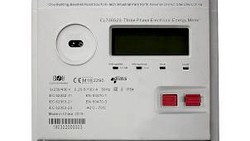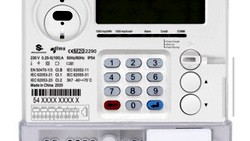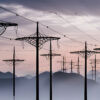With the continued growth of renewable energy sources, traditional methods of electricity metering are becoming less effective. Unlike traditional power sources, renewable sources such as solar and wind power are intermittent, which means that they do not produce a consistently reliable output. This presents significant challenges in accurately measuring and billing for these energy sources, as traditional metering methods designed for predominantly stable energy use patterns and limited electric flows are inadequate to accommodate increasing renewable energy installation, specifically in rural areas. In addition, most renewable energy installations are connected behind the utility's meter, creating the need for bidirectional metering.
Traditional Metering vs Intermittent Renewables
Traditionally, electricity meters were designed to measure and record the amount of energy consumed by a household or business. This worked well for traditional power sources, which produce a consistent output that can be easily measured and billed for. However, the intermittent nature of renewable energy sources means that traditional metering methods are no longer effective.
Intermittent renewables are affected by many factors such as weather, time of day, and geographic location. For example, a wind turbine may produce little to no power on a calm day or a solar panel may not produce energy during nighttime. Unlike traditional power sources, the output from these intermittent sources can vary and fluctuate greatly. This presents a challenge for utilities in ensuring the accurate billing of energy consumption.
The Need for Bi-Directional Metering
Bi-directional metering is a crucial element in the accurate measurement and billing of energy consumption from renewable energy sources. Current one-directional meters are unable to measure energy flowing back into the grid from renewable installations. Bi-directional meters are designed to accurately measure the flow of energy in both directions, thus enabling the utility to measure the amount of energy consumed by the user and the excess energy returned to the grid, which is then available to be resold.
The use of bi-directional metering also supports net metering policies, which allows customers with renewable energy systems to receive credit for any excess energy they generate. Essentially, customers are able to sell any excess electricity back to the utility, which is then sold to other customers. Net metering allows customers to offset their energy consumption and reduce their energy bills.

New Metering Technologies
New metering technologies have been developed to better integrate intermittent renewable energy sources into the grid. Smart meters, for example, are digital devices that can measure and record energy consumption in real-time, and are capable of communicating with the utility company to provide accurate readings of energy usage. With the use of smart meters, utilities can better integrate intermittent renewable energy into their grid systems and manage energy use more effectively.
Another tool that comes in handy when dealing with intermittent energy sources is called Demand Response (DR). DR comprises hardware and software installed on the customer's side, which can be activated by the utility in case there is a surge in demand due to unexpected circumstances such as a power outage. DR can shift the energy demand to a later period, or can switch between different sources – including renewable energy sources and storage – to mitigate the impact of the uncertain energy supply due to intermittent energy generation, on the power grid.
Another solution is the use of net metering. This is a billing mechanism used by utilities that allows customers with renewable energy systems to receive credit for any excess energy they generate. Essentially, customers are able to sell any excess electricity back to the utility, which is then sold to other customers. Net metering allows customers to offset their energy consumption and reduce their energy bills.
Takeaway
The impact of intermittent renewables on electricity metering is significant. Traditional methods of metering are no longer effective in accurately measuring and billing for energy consumption. However, with the deployment of new metering technologies such as smart meters and net metering, utilities can better manage intermittent renewables and integrate them into their overall grid systems. Data analytics can also play a key role in optimizing energy management and identifying potential issues with grid systems. In conclusion, it is imperative that utilities stay up-to-date with the latest metering solutions to ensure accurate billing and effective energy management.
Contact us today for more information about how we can help with your transition to renewable energy. Let's work together to create a sustainable future.
Editor's note: This article was originally published in June 2023 and has been updated for comprehensiveness.





All comments are moderated before being published. Inappropriate or off-topic comments may not be approved.